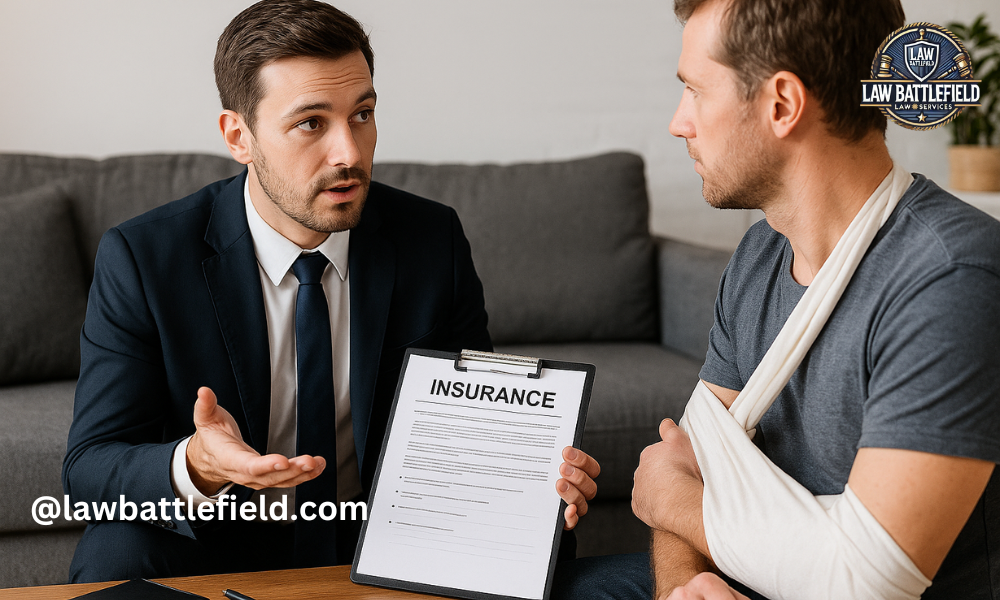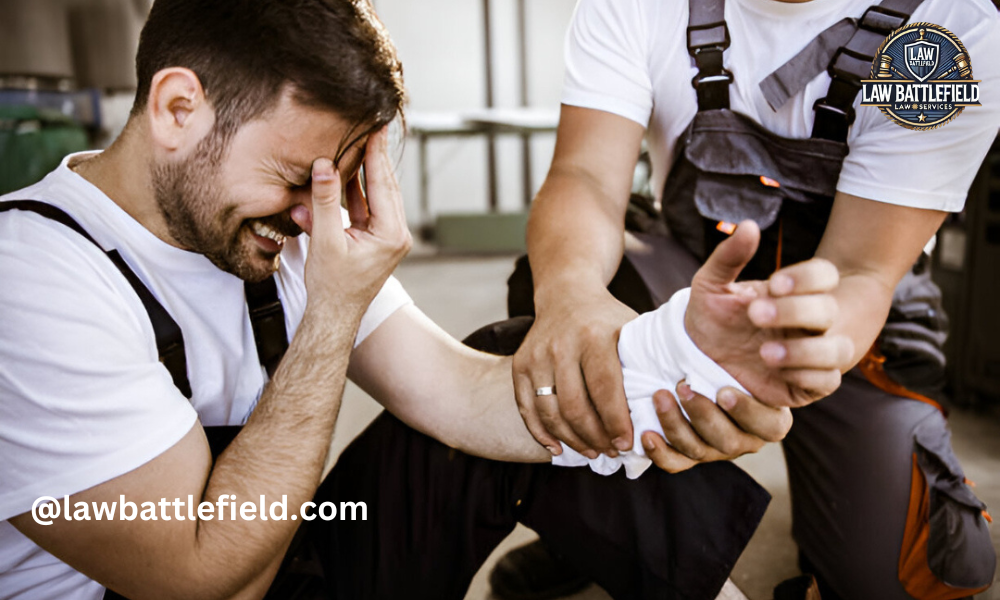Introduction To Personal And Advertising Injury
Definition Of Personal And Advertising Injury
Personal and advertising injury refers to non-physical harm caused to a person or business. This includes harm to their reputation or intellectual property. Examples of these injuries are defamation (libel or slander), invasion of privacy, or using someone else’s advertising ideas without permission. In simpler terms, it’s the kind of damage that affects people or businesses through words or actions, rather than physical harm.
Importance In Commercial General Liability (CGL) Insurance
Personal and advertising injury is often covered under Commercial General Liability (CGL) insurance. This type of insurance is designed to protect businesses from lawsuits arising from their everyday operations. For example, if a business accidentally harms another company’s reputation through advertising or is accused of using someone else’s trademark, CGL insurance can help cover legal costs and damages. Having this coverage is essential because even an innocent mistake can lead to costly lawsuits.
Examples Of Real-World Situations
To better understand how personal and advertising injury works, consider these real-life situations:
- Libel or Slander: A small business posts negative statements about a competitor in an online ad, and the competitor sues for defamation. This is an example of advertising injury.
- Wrongful Eviction: A landlord evicts a tenant unlawfully, believing they have the right to do so. The tenant files a lawsuit claiming their rights were violated, which is a personal injury under CGL coverage.
- Copyright Infringement: A business uses a competitor’s logo or advertising slogan without permission. The competitor sues for copyright infringement, which is covered under advertising injury.
By understanding these situations, business owners can see how crucial it is to protect themselves from non-physical harm. Personal and advertising injury insurance is designed to help in these scenarios, ensuring that businesses can defend themselves without facing financial ruin.
What Is Covered Under Personal And Advertising Injury Insurance?
Personal and advertising injury insurance covers various non-physical harm that can be inflicted on individuals or businesses. Let’s break down the main areas covered:
False Arrest, Detention, Or Imprisonment
This occurs when someone is wrongfully held against their will. For example, if a store owner wrongfully detains a customer on suspicion of theft without evidence, the customer could sue for false imprisonment. Personal and advertising injury insurance can help cover legal costs in such a case.
Malicious Prosecution
This happens when someone files a lawsuit or criminal charge without a valid reason, intending to harm the defendant. If the defendant wins the case, they can sue for malicious prosecution. For instance, a business owner might wrongly accuse a competitor of illegal activity. If the competitor wins the case and proves the accusation was baseless, they could file a malicious prosecution claim, which would be covered under this insurance.
Wrongful Eviction, Entry, Or Invasion Of Private Occupancy
This refers to unlawful actions by a property owner, like evicting a tenant without following legal procedures or entering a property without permission. If a landlord locks out a tenant or invades their privacy, the tenant can sue, and the insurance would cover the legal costs.
Slander And Libel (Defamation)
Defamation involves making false statements that harm someone’s reputation. Slander is spoken defamation, while libel is written or published defamation. For instance, a business might write false claims about a competitor in an advertisement. If the competitor sues for defamation, personal and advertising injury insurance helps cover the defense and possible settlement costs.
Violation Of Privacy Rights
Privacy violations occur when a business shares someone’s personal information without permission or invades their private space. For example, if a company uses a person’s photo in an ad without their consent, they could be sued for violating privacy rights. This insurance would cover legal fees and settlements for such claims.
Misappropriation Of Advertising Ideas
Using someone else’s advertising concepts without permission can lead to a lawsuit. For instance, if a company copies a competitor’s unique marketing idea or campaign, the competitor might sue for misappropriation. This type of case falls under advertising injury coverage.
Copyright, Trade Dress, Or Slogan Infringement In Advertising
This includes using copyrighted materials, trademarked designs (trade dress), or slogans without authorization. For example, if a business uses another company’s logo or slogan in their marketing materials, they might face a copyright or trademark infringement lawsuit. Personal and advertising injury insurance can help cover the legal defense and damages.
Common Exclusions In Personal And Advertising Injury Coverage
While personal and advertising injury coverage offers significant protection, there are some important exclusions businesses need to understand. These exclusions are cases where the insurance will not cover damages or legal fees.
Knowingly False Publications
If a business knowingly publishes false information about a person or competitor, any resulting lawsuit will not be covered. Insurance companies protect against accidental harm, but intentional dishonesty is not included. For instance, if a business deliberately lies about a competitor’s product, the insurance won’t cover the lawsuit.
Intentional Acts Leading To Injury
Coverage only applies to unintentional acts. If a business owner intentionally causes harm, such as deliberately violating someone’s privacy or using defamatory statements, personal and advertising injury coverage does not apply. For example, if a company knowingly violates copyright laws, the insurance won’t cover the legal consequences.
Criminal Or Illegal Activities
Any actions that involve criminal behavior or illegal activities are excluded from coverage. For instance, if a business is involved in fraud, theft, or other illegal acts, and this leads to a lawsuit, the policy will not cover it. Even if a lawsuit arises from advertising or marketing activities, if they involve illegal practices, insurance will not help.
Content Published Before Policy Inception
Personal and advertising injury coverage only applies to content published during the policy period. Any claims related to materials or advertisements that were published before the insurance policy started are excluded. For example, if a business is sued for a defamatory statement made in an ad before the policy began, it would not be covered.
Advertising Claims That Fail To Meet Product Quality Or Performance Promises
If a business falsely advertises a product’s quality or performance and the product doesn’t meet those claims, lawsuits arising from this will not be covered. For instance, if a company claims their product has certain features or capabilities that it actually doesn’t, and a customer sues for false advertising, this would not be protected by the insurance.
Real-Life Examples Of Personal And Advertising Injury Claims
Personal and advertising injury claims often arise from misunderstandings, errors in judgment, or accidental infringement on others’ rights. Here are a few real-life examples that show how these types of claims can unfold:
False Imprisonment
In one common scenario, a retailer wrongfully detains a customer suspected of shoplifting. Let’s say a store owner holds a customer in the back office while reviewing security footage, but it turns out the customer didn’t steal anything. The customer might sue for false imprisonment, claiming that their freedom was restricted without a valid reason. In this case, personal and advertising injury insurance would cover the legal defense and any potential settlements.
Wrongful Eviction
A landlord might evict a tenant without following proper legal procedures, such as failing to give adequate notice. For example, if a commercial landlord wrongfully locks a tenant out of their business space, the tenant could file a lawsuit for wrongful eviction. The legal fees and potential damages from the lawsuit would be covered by the landlord’s personal and advertising injury insurance.
Copyright Infringement
Small businesses can sometimes unintentionally use a competitor’s slogan, logo, or advertising style without permission. If a bakery, for example, uses a similar tagline or design as a well-established competitor, they might be sued for copyright infringement. The bakery’s personal and advertising injury insurance would cover the defense costs, as well as any settlement or judgment if they lose the case.
Legal And Financial Implications Of Personal And Advertising Injury
When a business faces a personal or advertising injury lawsuit, the financial and legal consequences can be significant. Let’s explore the potential impact:
Potential Costs Of Lawsuits
The costs of defending a business in a lawsuit can add up quickly, even if the business ultimately wins the case. Legal fees for hiring attorneys, court costs, and expert witnesses can be thousands of dollars. If the business loses the case, they might also be responsible for paying damages or settlements, which could be even more costly.
For example:
- Legal fees: Hiring a defense attorney for a complex case can cost anywhere from $200 to $500 per hour.
- Settlements or judgments: Depending on the severity of the case, a business could be required to pay substantial settlements or court-ordered damages, ranging from thousands to even millions of dollars in extreme cases.
The Role Of Insurance In Managing These Risks
Personal and advertising injury insurance is crucial in helping businesses manage the financial risks associated with these types of lawsuits. When covered by a Commercial General Liability (CGL) policy, the insurance provider will typically handle the legal defense, including attorney fees and other court costs, as well as any settlements or judgments up to the policy limits.
Without this coverage, businesses would have to bear the full financial burden of the lawsuit, which could lead to severe financial strain, or even bankruptcy in extreme cases. This makes personal and advertising injury insurance an essential part of risk management for any business.
How Personal And Advertising Injury Coverage Works
Overview Of How Claims Are Handled
When a claim for personal or advertising injury is made, the process usually begins with the business notifying its insurance provider about the lawsuit or potential claim. The insurer will then assess whether the claim falls under the coverage provided in the policy. Once the claim is approved, the insurance company will typically:
- Provide legal defense: The insurer assigns or reimburses legal representation to handle the case in court, covering legal fees as outlined in the policy.
- Cover settlements or judgments: If the business is found liable or chooses to settle, the insurance will cover those costs, up to the policy limit.
This process ensures that the business is not burdened with the full cost of a lawsuit, helping them focus on operations while the insurance handles the legal aspects.
Insurance Policy Limits And Considerations For Businesses
Each policy has a limit, which is the maximum amount the insurer will pay for legal defense and settlements. Businesses should carefully consider their coverage limits based on their industry, size, and exposure to risks. For example:
- A small retail shop might require lower coverage than a large media company that frequently engages in high-profile advertising.
- Businesses should ensure they understand both the aggregate limit (total coverage during the policy period) and the per-claim limit (coverage for a single incident).
It’s important for businesses to work with an experienced insurance agent to determine the right level of coverage that fits their needs.
Importance For Businesses: Who Needs Personal And Advertising Injury Coverage?
Why Businesses In Media, Advertising, And Retail Are At Higher Risk
Businesses involved in media, advertising, and retail face a higher risk of personal and advertising injury claims because of the nature of their work. These industries often engage in activities like:
- Public communications and marketing campaigns that might inadvertently defame a competitor or infringe on intellectual property.
- Using copyrighted material or advertising ideas that might lead to a copyright or trademark infringement lawsuit.
- Interacting with customers directly, increasing the chances of incidents like wrongful detention or invasion of privacy.
For example, a media company might produce an advertisement that unintentionally uses a competitor’s slogan, leading to a lawsuit for slogan infringement. Similarly, retail businesses might face wrongful eviction or false arrest claims from customers or tenants.
Examples Of Industries That Benefit Most From This Coverage
Certain industries are particularly vulnerable to personal and advertising injury risks and would benefit greatly from this coverage:
- Media and Advertising: Constantly creating and distributing content increases the risk of defamation or intellectual property claims.
- Retail and Hospitality: With frequent customer interactions, the chances of wrongful detention or invasion of privacy lawsuits are higher.
- Technology: Companies developing software or apps might unintentionally infringe on copyrights or trademarks.
- Real Estate and Property Management: Landlords could face wrongful eviction or privacy invasion claims from tenants.
Businesses in these sectors should seriously consider this coverage to safeguard against costly lawsuits.
Conclusion
Final Thoughts On Mitigating Non-Physical Injury Risks
In today’s business environment, where reputation is everything, personal and advertising injury lawsuits can be financially devastating and damaging to a company’s brand. By securing adequate coverage, businesses can protect themselves from non-physical injury risks such as defamation, wrongful eviction, or copyright infringement.
Recommendations For Choosing Appropriate Coverage Limits
Choosing the right level of coverage is key. Businesses should:
- Evaluate their risk exposure: Higher-risk industries like media or retail may need higher coverage limits.
- Consider their budget: Balance affordability with the level of protection needed to ensure adequate coverage in case of a claim.
- Consult with an expert: Work with an insurance professional to customize a policy that fits specific needs and ensures all potential risks are covered.
By understanding and investing in personal and advertising injury insurance, businesses can mitigate the risks of non-physical lawsuits and protect their financial health.
Frequently Asked Questions (FAQs)
What Is Personal And Advertising Injury Coverage?
Personal and advertising injury coverage is part of a Commercial General Liability (CGL) policy. It protects businesses against lawsuits claiming non-physical harm, such as defamation, copyright infringement, wrongful eviction, and invasion of privacy.
What Types Of Claims Does Personal And Advertising Injury Insurance Cover?
This insurance covers claims like false arrest, wrongful eviction, slander, libel, privacy invasion, and using someone else’s advertising ideas or content without permission.
Are Intentional Acts Covered Under Personal And Advertising Injury Insurance?
No, intentional acts, such as knowingly publishing false statements or violating someone’s rights on purpose, are not covered.
Who Needs Personal And Advertising Injury Coverage?
Businesses in high-risk industries like media, advertising, retail, real estate, and technology benefit the most from this coverage due to the nature of their work, which often involves public interactions, content creation, and customer relations.
What Is Not Covered By Personal And Advertising Injury Insurance?
Common exclusions include knowingly false publications, intentional harm, criminal activities, and claims related to advertising that over-promises product quality or performance.
How Much Personal And Advertising Injury Coverage Do I Need?
The amount depends on your business size, industry, and risk exposure. Consult with an insurance expert to determine appropriate limits based on your business activities and potential risks.
Was this article helpful? Check out more on Lawbattlefield.com
How Sacramento Mesothelioma Lawyer Vimeo Videos Can Help Victims Find Legal Support





